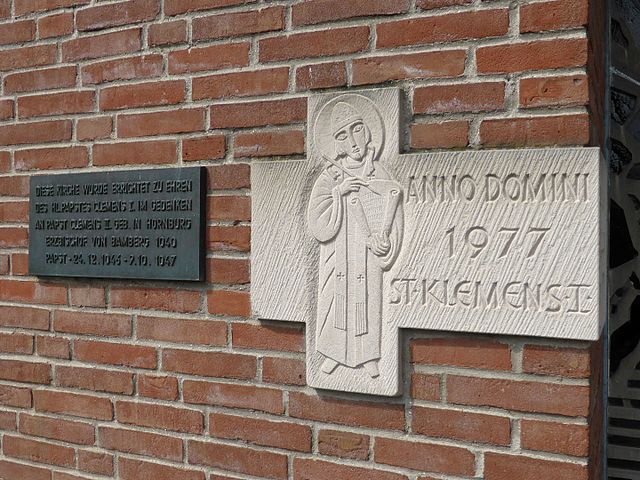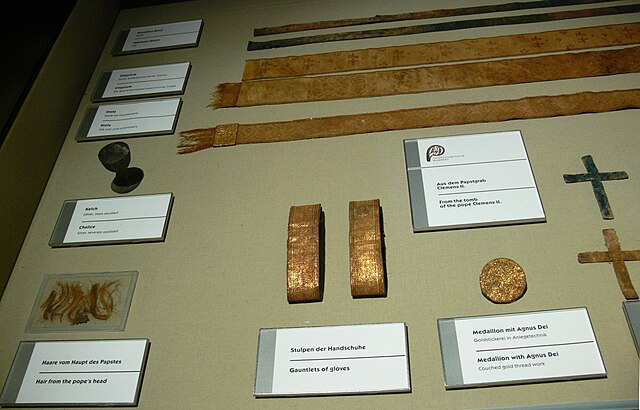Pope Clement II, was head of the Catholic Church and ruler of the Papal States from 25 December 1046 until his death in 1047. He was the first in a series of reform-minded popes from Germany. Suidger was the bishop of Bamberg. In 1046, he accompanied King Henry III of Germany, when at the request of laity and clergy of Rome, Henry went to Italy and summoned the Council of Sutri, which deposed Benedict IX and Sylvester III, and accepted the resignation of Gregory VI. Henry suggested Suidger as the next pope, and he was then elected, taking the name of Clement II. Clement then proceeded to crown Henry as emperor. Clement's brief tenure as pope saw the enactment of more stringent prohibitions against simony.
Sculpture at St Clement's church, Hornburg
Robes beloning to Clement II in the Bamberg Diocesan Museum
Artifacts from Clement's grave in the diocesan museum: hair, chalice, gauntlets, medallion
Fabrics
Henry III, Holy Roman Emperor
Henry III, called the Black or the Pious, was Holy Roman Emperor from 1046 until his death in 1056. A member of the Salian dynasty, he was the eldest son of Conrad II and Gisela of Swabia.
Henry with the symbols of rulership attending the consecration of the Stavelot monastery church on 5 June 1040, mid-11th-century miniature
Monogram of Henry III
Henry III established the Salian Kaiserpfalz (imperial residence) and spiritual center at Goslar, that includes the emperor's palace, the collegiate church of St. Simon and St. Jude, the palace chapel of St. Ulrich and the Church of Our Lady
Conrad II and his wife Gisela kneel in front of the Majestas Domini, Codex Aureus Escorialensis, around 1045/46, Madrid, Biblioteca del monasterio de San Lorenzo de El Escorial








